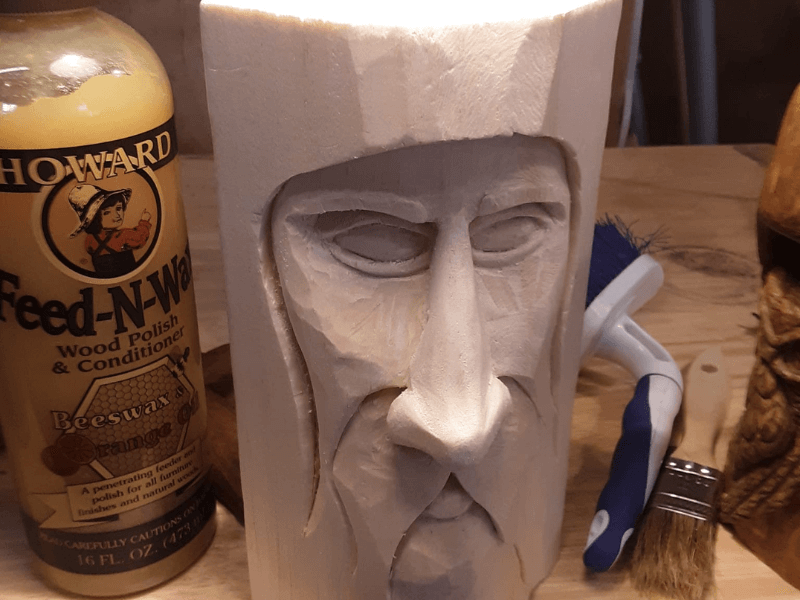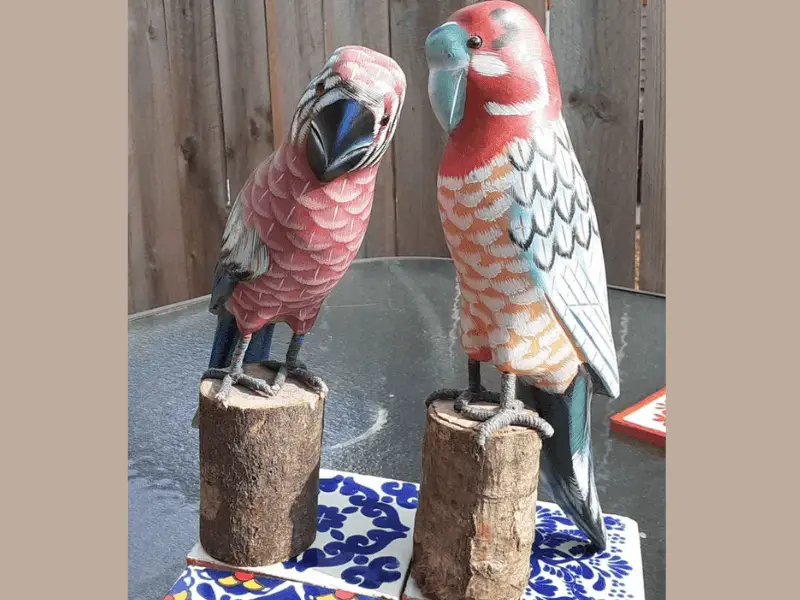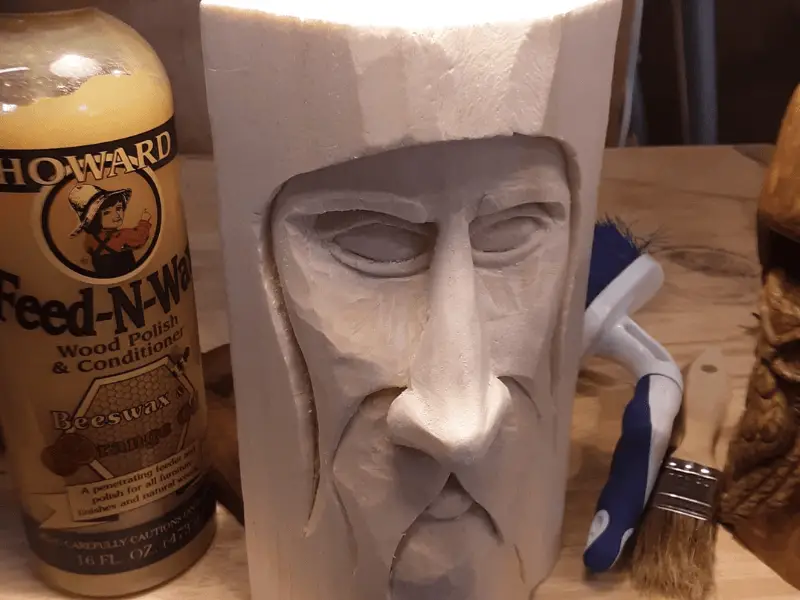Choosing wood to carve is an important task a wood carver should know how to do. This exercise is necessary because you will probably be investing significant time in your carving journey. Therefore, you must spend a few dollars more on a decent piece of wood. Ensure that you are selecting the wood by yourself so that you may be keen on some characteristics, such as knots and shakes.
There are quite a few good woods for carving that, as carvers, you would want to use for various reasons, such as aesthetics and durability. You will discover that different woods turn out differently when carved simply because of the grain alignment and arrangement. In our search for a good wood for carving, we came across balsa wood, but we were uncertain if we could use balsa wood for carving until we did thorough research on balsa.
Carving with Balsa wood

Now, let’s talk about balsa wood in the context of carving. For beginners, balsa wood can indeed be an excellent choice. First off, it’s incredibly easy to work with. Its softness allows you to make precise cuts without much effort. Plus, it’s fairly inexpensive and readily available, making it a smart choice for those just starting and practicing their craft.
However, every rose has its thorn, and balsa wood is no exception. While this wood is great for beginners due to its softness, this same quality can be a downside for more advanced projects. Balsa wood is so soft and light that it lacks the sturdiness needed for intricate, long-lasting carvings. Since it is a very open and coarse grain, it does not maintain details well. You are much better off with basswood for carving, and it usually is cheaper than balsa when buying it in chunks. It is, however, best suited for model gliders.
Characteristics of Balsa Wood
The first thing to note about balsa is its weight. It is very lightweight but strong when compared with other wood for carving. For instance, when you compare with oak, balsa weighs about a sixth of the weight of oak. However, balsa can be just as durable if treated correctly.
Another thing that is easily noticeable is its grain pattern. It has a tight and wide grain pattern. However, the grain pattern varies depending on how the tree grows. Some pieces of balsa wood will have tight grains, while others will have wider ones. This unique similarity gives them different strengths under pressure or tension forces applied along their lengthwise direction.
Finally, Balsa wood has a unique texture. It tends to be quite smooth, so it takes paint well without requiring any sanding before applying paint. This feature makes it ideal for use in model-building projects where you may need to do detail painting quickly without much preparation.
Advantages of Using Balsa Wood for Carving
One of the biggest advantages of balsa lies in its softness. The soft nature of balsa gives it an upper hand, especially for beginners who are just starting. Because of their insufficient carving skills, beginners can easily practice using balsa wood to carve objects into various shapes and sizes.
As a beginner, you may not also be so good at using carving tools, and therefore carving balsa will give you room to practice carving using any carving tool because balsa is much more forgiving, unlike other hardwoods, which are not forgiving when you make a mistake. Therefore, you have enough room to make as many mistakes as possible when carving with balsa.
Disadvantages of Using Balsa Wood for Carving
Even though we have said that balsa is lightweight and easy to carve into various shapes and sizes, it can not go well without mentioning its downsides. Therefore let us point out the disadvantages of using balsa wood for carving.
Balsa is Fragile
We have been saying that balsa is very soft, and that acted as an advantage. However, the soft nature makes balsa weak, so it might not withstand the pressure you apply when you are carving. It usually breaks when you insert too much pressure on it. The breakage, therefore, will result in an undesired shape on your carvings.
It isn’t easy to make Detail Carvings.
For rough practicing, it is best to use balsa; however, as you continue honing your skills and desire to make intricate details into your woodwork, balsa wood might not be the best choice. Its softness will make it difficult to maintain the precision required for detailed carving.
It gets difficult to Finish.
Balsa is a very porous wood. Therefore it becomes very challenging when it comes to finishing. The challenge comes because It absorbs paint and varnishes quickly, forcing you to make multiple coats of paint to achieve a smooth finish.
Nevertheless, mentioning the disadvantages of balsa does not rule out balsa wood as a carving option. Therefore depending on your project and skill level, it could still be a good choice. Remember, every type has pros and cons—it’s all about the best fits your needs!
Types of Projects Best Suited for Balsa Wood Carving

Having gone through the advantages and disadvantages of carving balsa, you may now wonder what the best projects you can do with balsa are. Our journey today will sail across the broad possibilities of balsa wood carving.
Making Miniature Modeling
Because of the soft texture of balsa and its lightweight, balsa wood is the go-to choice for small carvings. From architectural models to toy planes, you’ll find your creative journey using balsa smooth sailing.
Making of Props for Theater and Film
Again, the Balsa wood’s lightness makes it ideal for creating props that require mobility and durability. Therefore, balsa is the favorite among stage and screen artisans.
Making Educational Crafts
Balsa wood is the perfect material for school projects. This is because it is easy to shape, making it ideal for young, eager hands learning their way around a carving journey and maybe familiarizing themselves with carving tools.
Basic Tools for Carving Balsa Wood

For beginners and even intermediate woodcarvers, carving balsa wood can be a fascinating journey that you can get along with just basic tools. You don’t need to acquire complicated tools.
Carving Knife
This is the first and primary tool that you should own to get yourself started. However, for an effective carving experience using a carving knife, always ensure that it has a sharp, pointed blade, perfect for precise cuts.
Gouges
You will also need a tool that you can use to carve out larger sections of wood at once. A gouge is ideal for this purpose because it has a curved blade.
Chisels
You need a sharp tool to make smooth and straight cuts and edges. The chisel is the ideal tool you will need to invest in. Just remember always to chisel away from your body to avoid accidents.
Additional basic Tools
Even though the above tools are enough to get you going, you can add a few more to your toolbox that will take your balsa wood carving experience to the next level.
Sanding Paper
After achieving a successful object, you must move it to your desired look. Therefore, you need to invest in different grits that will produce different levels of smoothness.
Wood Glue
Since balsa is very soft, sometimes things will not go as you want. You will sometimes have breakages at the edges, and that’s okay. That’s where Wood glue comes into play for sticking bits back together.
Conclusions
As a beginner, starting your journey on woodcarving with a block of balsa is acceptable. However this is just for preparation to take your carving to the next level. Since balsa is soft and lightweight, you can use it comfortably to hone your skills in carving patterns of various shapes and sizes from a block of wood as well as learning how to use various carving tools. However, as you upgrade your skill, you should not use balsa anymore for carving as it will not bring out the best results in your final object.

